Some people say it was created by special historical fate, but many people believe that to have a Vietnamese animal paradise at Cat Tien National Park like today, it's all due to morality and personality. of the forest keepers.
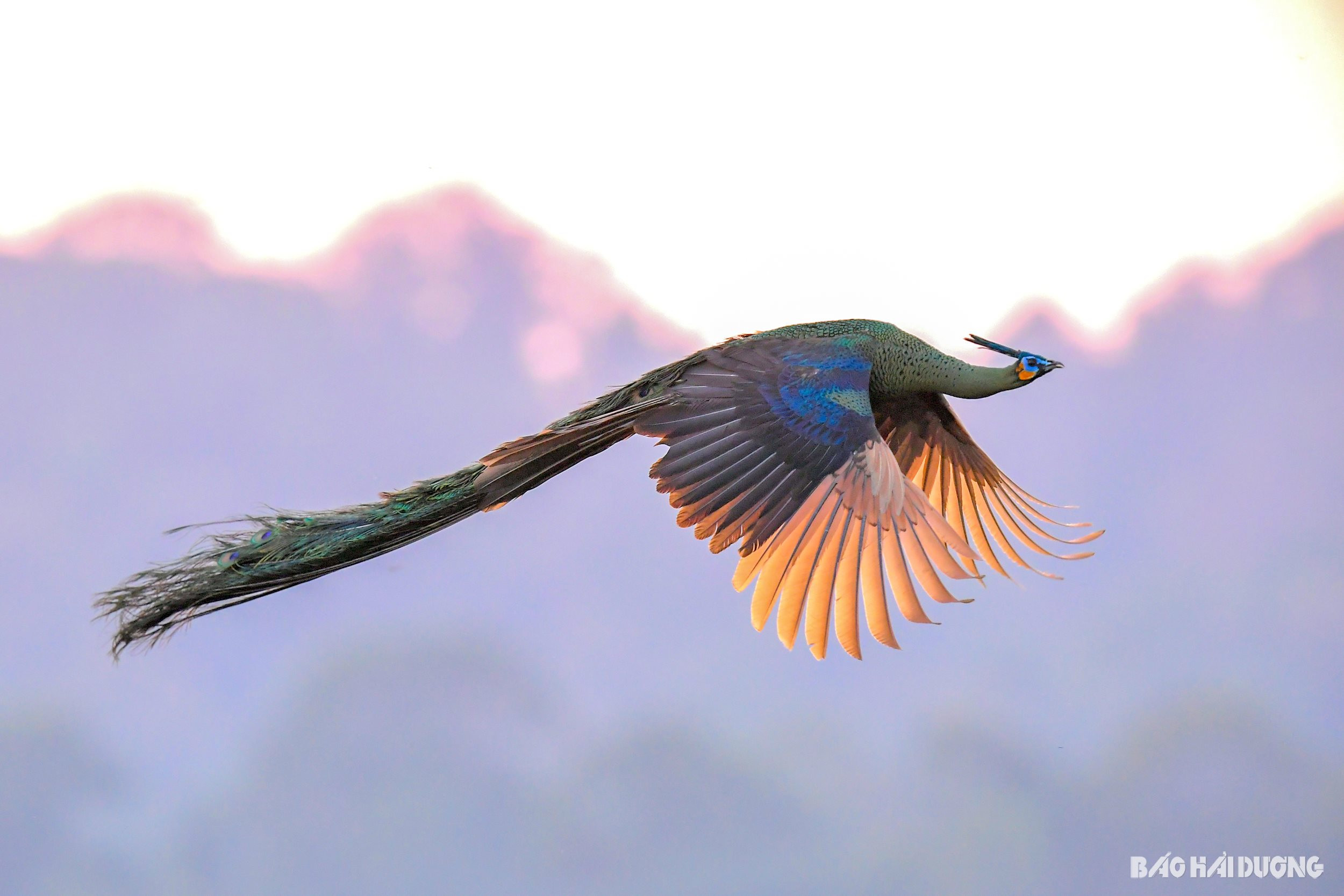
Only with determination and support for true transparency, on the banks of the meandering Dong Nai River, about 150 km from Ho Chi Minh City, can we maintain until today a "wilderness" that gathers like the whole world. world of African forest animals" - Cat Tien National Park (75,000 hectares wide, covering the territory of 3 provinces Dong Nai, Binh Phuoc, Lam Dong).
One night, I saw nearly a hundred deer with eyes as bright as stars
On the night of December 2023, Director of Cat Tien National Park, Mr. Pham Xuan Thinh, appointed ranger Le Duc Khanh, a guy with a large family working in the forestry industry, to hold a flashlight to lead us to "test". See how many wild animals there are." The truck has convertible seats that can carry up to thirty tourists. Everyone was absolutely silent, no one was allowed to use flashlights or phone lights to illuminate anything, to avoid scaring the animals. Only Khanh was alone, methodically moving the light over the trees and grasslands. Sometimes an owl with its crested owl rushes out into the street and flies over our heads, mysteriously beautiful. Here, a golden-black-headed oriole, as smooth as a cotton ball, is nestling his head under his own wings and sleeping soundly on the moss-covered canopy. There are a few Hainan flycatchers, with purple-blue heads and velvety feathers, nestling together as if seeking warmth in a deep sleep, under the protection of the broad leaves of the tropical forest stage. The area is still overwhelmingly green, because Nam Cat Tien has not completely ended its rainy season.
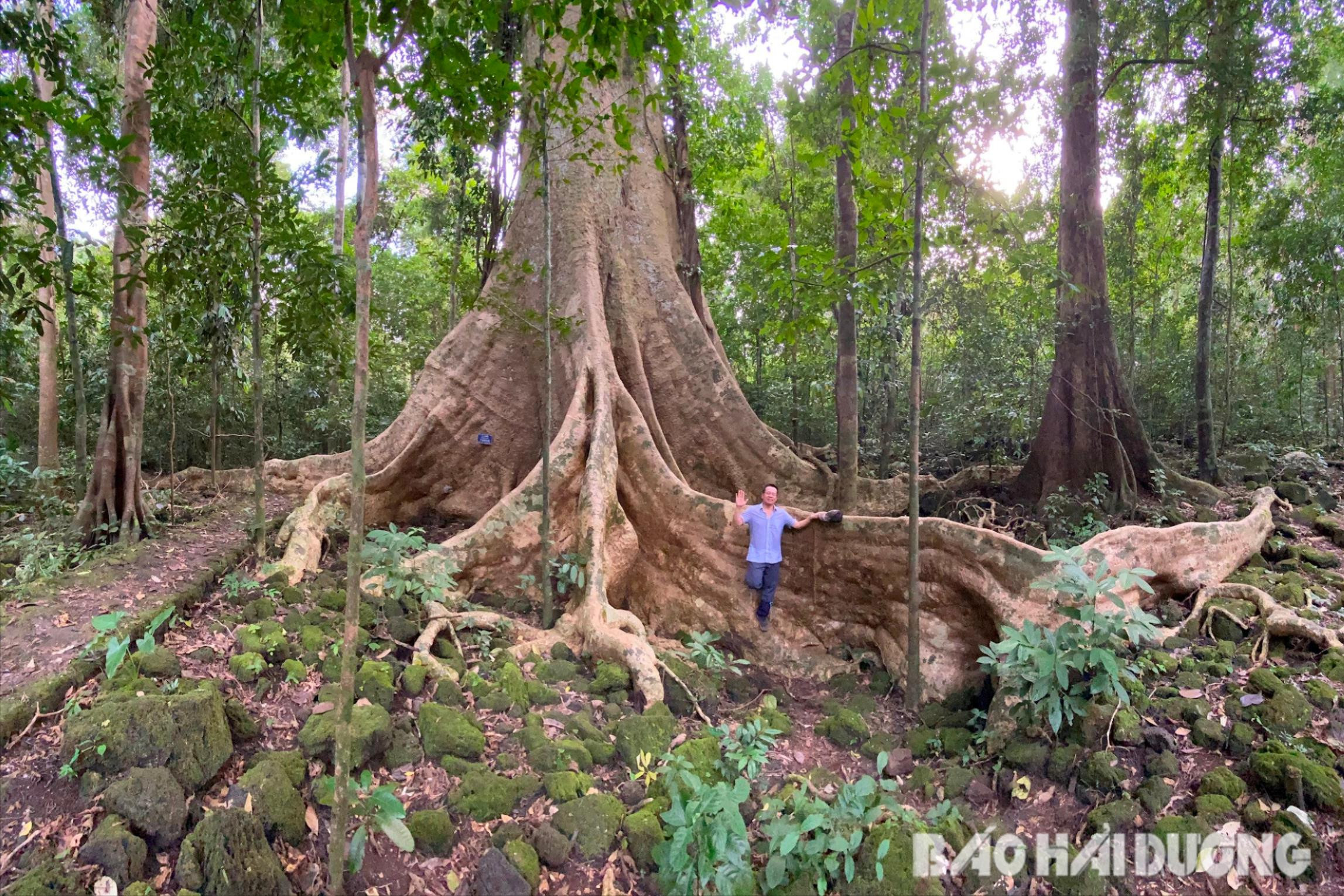
Journalist Do Doan Hoang at Cat Tien National Park
An owl's cry rang out in the old forest, sometimes keenly, sometimes vaguely, as if avoiding our search. Oh my god, something with red and purple eyes is sparkling in the distance. Crested mosquito owl, male. Its eyes "catch" the light, as if suffering from "sunstroke", curiously looking into the distance, not bothering to fly when we get quite close. His eyes were round. Khanh said, we must choose the right type of lamp, this has been recommended by wild bird conservation experts. The light is yellow enough, light enough, bright enough, how not to affect this beautiful nocturnal bird. Also be "courteous" to him, so he won't be afraid, and then the next time we go to this corner of the forest we can... meet each other.
In the past, Vietnamese people thought that owls, especially pig birds and pig owls (belonging to the owl family, have a sound similar to the sound of a pig) were always a bad omen, with death and illness. But now, especially since the extremely lovely images of owls in books and movies were imported from the West, people who love birds and explore wild nature have grown to love the beauty and wonder of it. the secret of owls. In Cat Tien, my friend Nguyen Manh Hiep captured the beautiful Oriental auntie (fish owl). Wild boar owl, ring-necked owl, crested mosquito owl...
Khanh and I approached, the most modern camera on the market, one click produced 30 high quality, "exploding" moments. The crested owl looked bewildered, then suddenly seemed to have escaped its sleep and flew away. The sound of a wild boar owl whispering in the green canopy of an ancient tree. Searchlight sneaks in. His flashlight-catching eyes were red. The "night assassin" is extremely sharp, his eyes are as big and clear as a cat's, when he catches the red light like... two mounds of fire, his ears stand up like a playful cat.
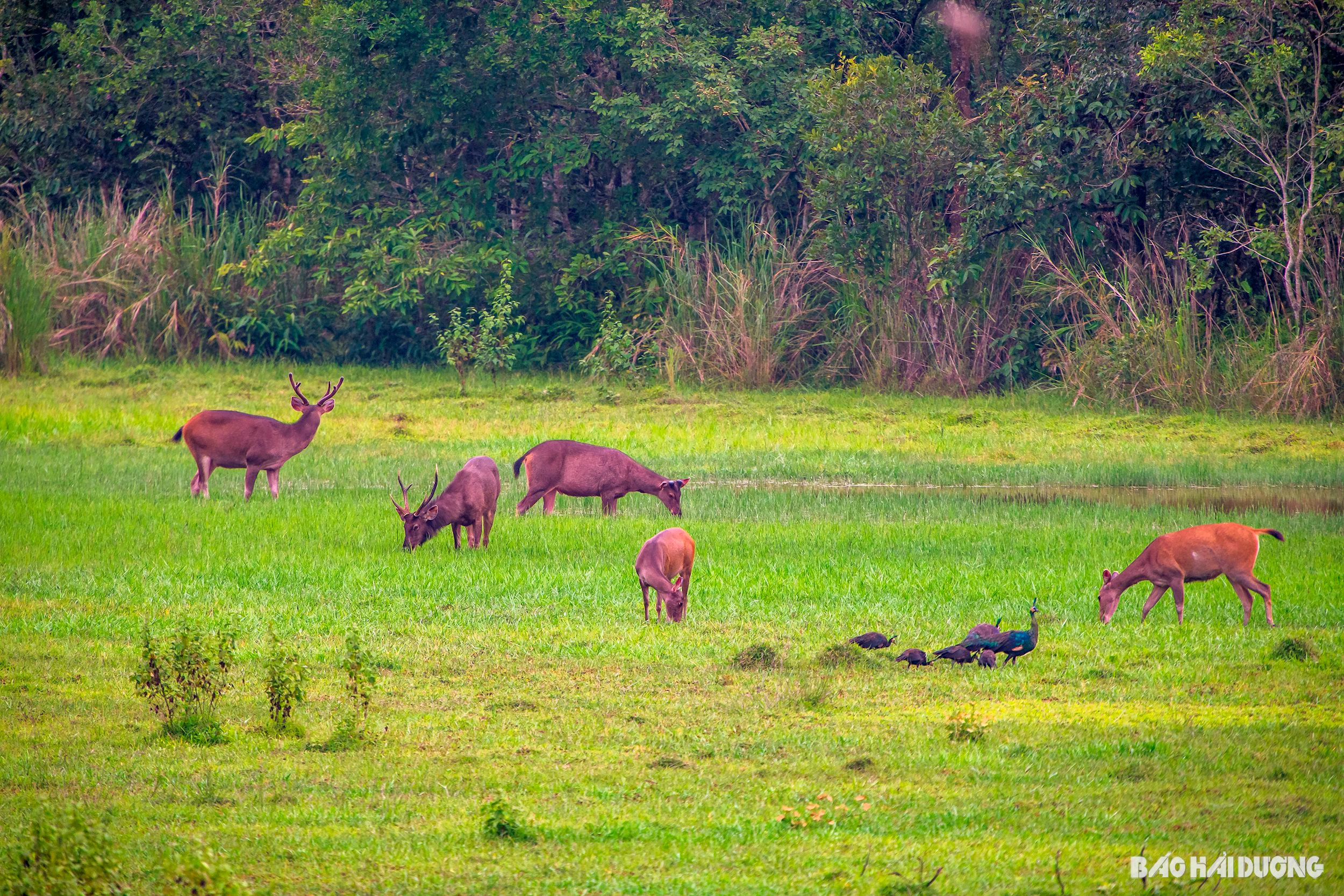
The "wilderness" gathers like the whole "world of African forest animals" in Cat Tien National Park
Outside, for an hour, we saw firelight as bright as falling stars along the grass slopes. Continuous herds of deer. Male deer in the season of luring their mates have red musk on their necks (must be very fragrant, we are far away and can't feel it). There was a wet deer just lying in the mud. The mother deer led the baby deer and chattered out, looking curiously at the light. A few muntjacs (also known as mén, mang) and a pair of lovely cheetahs slithered through the thatched grass.
Suddenly, a bison, another bull, they walked backwards in the dark night. There are countless civets. Many birds, animals, and nocturnal species appeared. But mostly it's still during the day.
Mr. Tang A Pau, a person who has spent nearly two decades photographing wild nature, is still busy writing at the age of over 70 and is especially devoted to denouncing rings of environmental destruction. Mr. Pau spent 6 months continuously in the "paradise of African animals" - Cat Tien National Park to take photos. With a pickup truck specially allowed to go into the forest, he took photos of birds, owls, peacocks, and wild animals of all kinds (gaur, elephant, bison, yellow-cheeked black gibbon, black-shanked douc, silver langur). Indochina, wild boar, deer, porcupine, roe deer...) move people's hearts. Perhaps this is the only place in Vietnam where it is not too difficult to meet large herds of gaurs and record them.
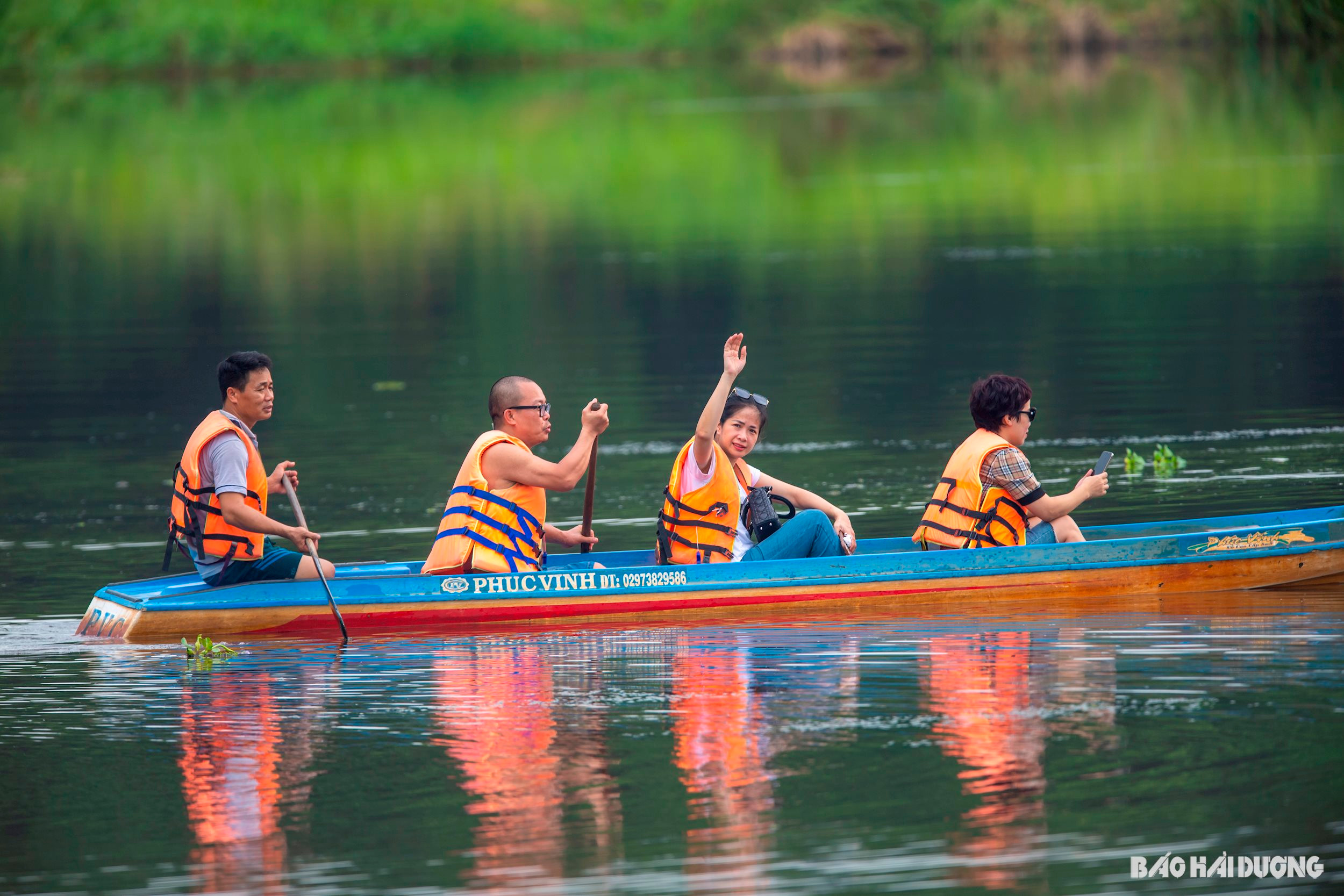
Visitors can take a boat trip to visit Cat Tien National Park
Thanks to the painful process of being passionate about Cat Tien nature, Mr. Tang A Pau was awarded the title "Knight of the Forest" by the Garden Director at that time, Mr. Pham Hong Luong. The awarding ceremony took place solemnly, and Vietnamese media reported respectfully. Photos of many artists passionate about wild nature (such as Mr. Pau, Mr. Nguyen Manh Hiep...) have been solemnly printed in large format by the Park Management Board, displayed in tourist reception halls, and posters promoting tourism. Calendars are printed in the accommodation rooms named after elephants, bears, sandalwood trees, red peacocks, green peacocks... of the garden. This is a very effective form of spreading love for nature.
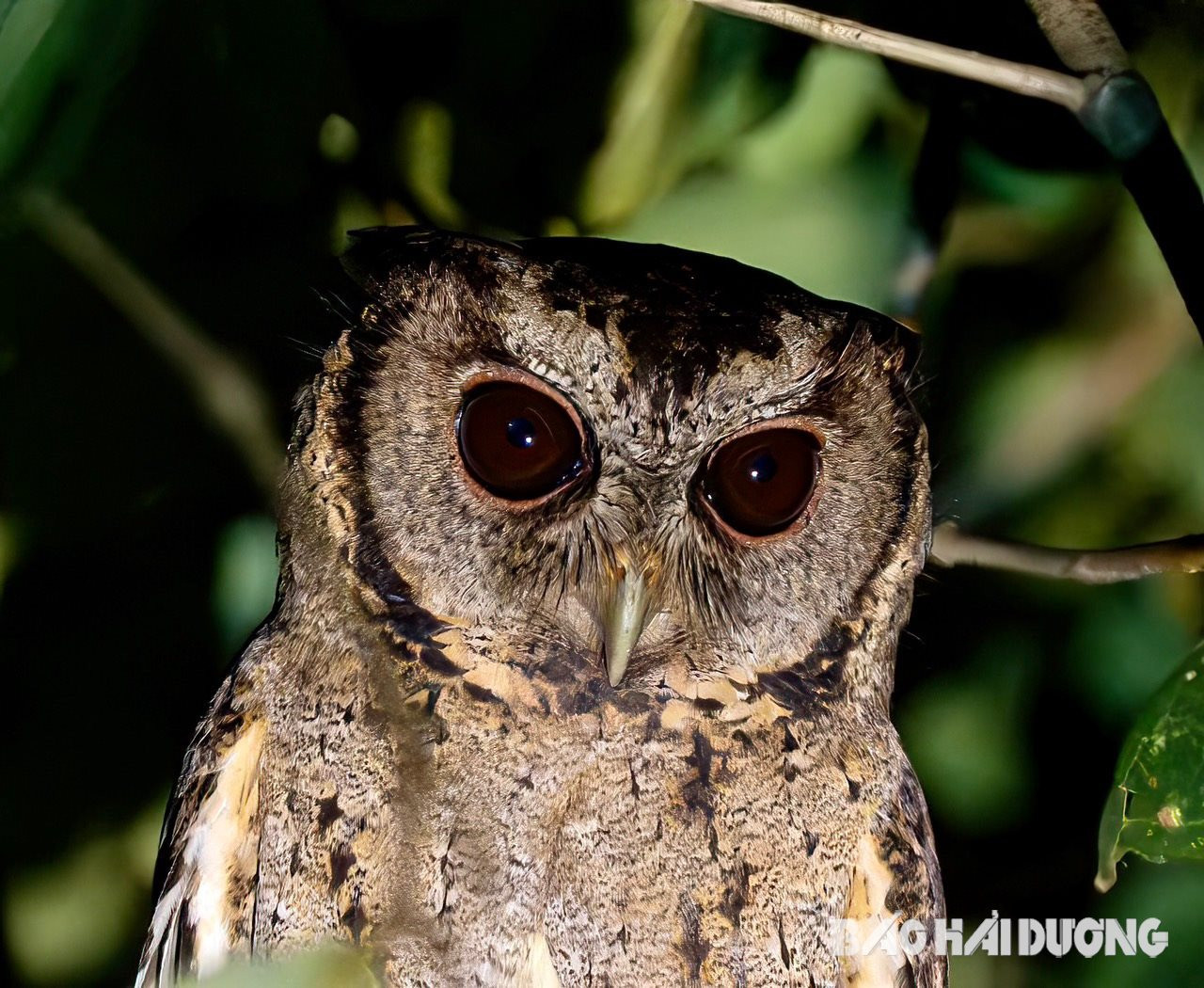
If before it was a bad omen, now owls are loved by bird enthusiasts and those who love to explore wild nature because of the mysterious beauty of this bird.
The courageous battle of the knights guarding the forest
The respectful attitude of the Board of Directors, staff, and rangers of Cat Tien National Park towards the values of the natural treasures they are managing has made an important contribution to honoring and spreading those things. Surely you will think that you are in a pristine "Eden garden" - something that is rare in the world and even more rare in Vietnam - especially when we are used to going to the garden. The country only sees people, restaurants, and trees, but rarely sees great wonders, and even fewer wild animals freely grazing and foraging. Let's ask, in Vietnam today, is there any place where in just one night following a flashlight to look for animals, you can meet about a hundred deer, gaur, bison, civets, birds, etc. snakes, owls…?
Another notable highlight is the birds in Cat Tien National Park, I myself have photographed wild peacocks dancing beautifully, mysterious night owls, and rare birds that international visitors eagerly come to find such as pitta. , red cash chicken. Cat Tien National Park is also a special-use forest with the most bird photography areas (sites) in Vietnam: with 6 sites! Meanwhile, in other National Parks considered crowded with tourists and fertile "green lungs" such as Bach Ma, Ba Vi, Tam Dao, Pu Mat, Con Dao, Yok Don... there are no bird sites. any!
A statistic has been stated by experts and officially published in the press: Among the more than 900 bird species recorded in Vietnam, Cat Tien National Park has more than 400 species. The estimated rate is more than 40%, nearly 50% of Vietnam's birds gathering at Cat Tien. If you walk the 5km paved road to the internationally important wetland (honored under the Ramsar convention), you will encounter countless birds and animals, splendid male peacocks dancing merrily, Owls call dreamily, birds fly colorfully. In particular, Bau Sau is home to the most wild freshwater crocodiles in Vietnam. 600 swamp killers, swimming to find food, during the day they lie with their mouths open in the sun, at night they swim in boots, shining a flashlight for a while and see thousands of bright eyes like scattered stars...
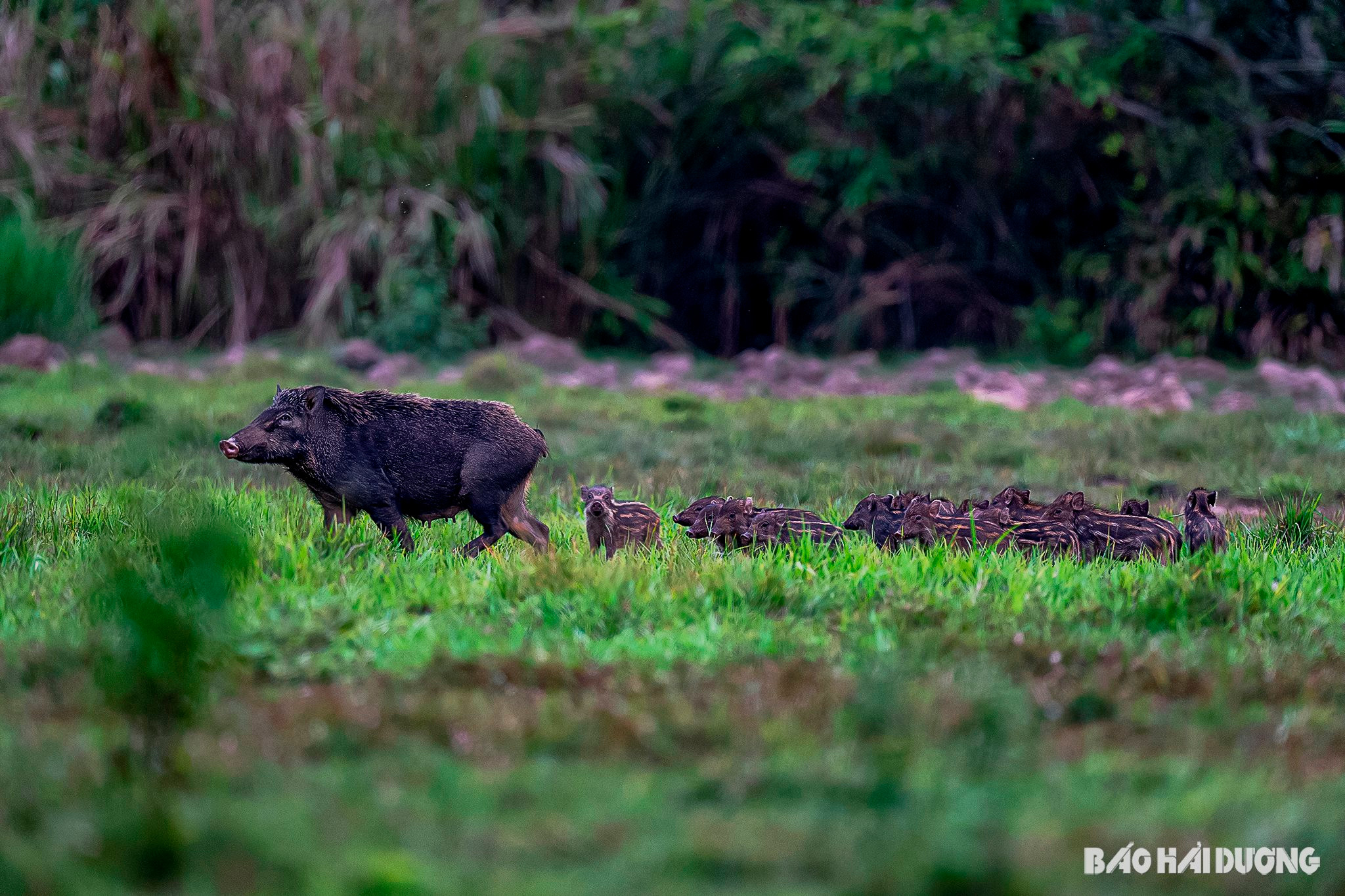
Wild boar herd in Cat Tien National Park
To keep birds and animals together, reminiscent of classic images of such "African forest animals" - still existing in the middle of the third decade of the 21st century - in Cat Tien National Park , the forest protection forces here, for many generations, have rushed forward and "fought" really courageously against the evil tricks of all kinds of loggers. More than 90km of Dong Nai River surrounds the forest area, on the other side of the river are residential clusters, boats can penetrate into the garden with just "starting the engine for a minute". Therefore, propaganda, imitation, deterrence, enlightenment, so that many people (in all 3 provinces) join hands to be proud and preserve the "Cat Tien wilderness", that is the key to our mission. problem. Everywhere in the vast forest is a "forest gate", the ranger force is too thin, the means of transportation and support tools are quite simple, the confrontation with loggers is extremely difficult.
In that context, only with true public service ethics and genuine efforts can forests and forest souls (animals) be protected as they are today. Mr. Pham Hong Luong, former Director of Cat Tien National Park, used his own personal page, the image of himself and his "traditional" family working in the field of nature conservation. to spread precious values from the Cat Tien wilderness. The current Director of Cat Tien National Park, Mr. Pham Xuan Thinh, each time handles cases of using guns, pepper spray, sharp knives, and sticks to brutally attack rangers, collecting all kinds of evidence. Traps, weapons and many rare animals had just been killed. He was so shocked that he sent us photos. One time he exclaimed: It hurts, journalist!
Of course, the more fiercely they protect the forest and courageously resist acts of destroying the forest and killing rare animals, the more vulnerable the ranger will be to bad guys. At Cat Tien National Park, in 2023 alone, sometimes in 3 days of March, there were up to 2 brutal assaults on rangers. Specifically, on March 2, 2023, 9 forest ranger comrades went on patrol and discovered a group of loggers hunting and killing many wild animals such as: wild boar, deer, cheetah, civet cat.... They proceeded to handle it. The subjects aggressively used homemade guns, pepper spray, knives, and large wooden sticks to continuously and brutally attack. 3 ranger comrades were seriously injured, including the Deputy Head of the ranger station, Pham Ngoc Tuan, who suffered many bruises and bleeding on his chest, neck, mouth, and nose. Especially the serious wound on the left cheek. Brothers Chiu Van Hai and Luong Van Bao were also seriously injured. After that, 6 loggers were detained by Tan Phu District Police (Dong Nai), the case was prosecuted, and the accused was prosecuted. 3 days before that, on the evening of February 28, 2023, Mr. Vu Manh Cuong, from the Da Bong Cua Ranger Station, Cat Tien National Park, went on duty and was brutally assaulted by 5-6 young men and had to go to prison. Cho Ray Hospital (Ho Chi Minh City) for long-term treatment.
Wonderful nature, when protected and promoted for its worthy value, is not just an asset in the form of large trees containing many cubic meters of expensive wood; Not only are they large, rare animals..., they are also a beautiful and loving living space to nurture our souls and heal all our wounds. They are "visual teaching tools" and irreplaceable, helping to form personality and nurture kindness in each of us. The forest is an armor, a magical common roof that protects and envelops this world.
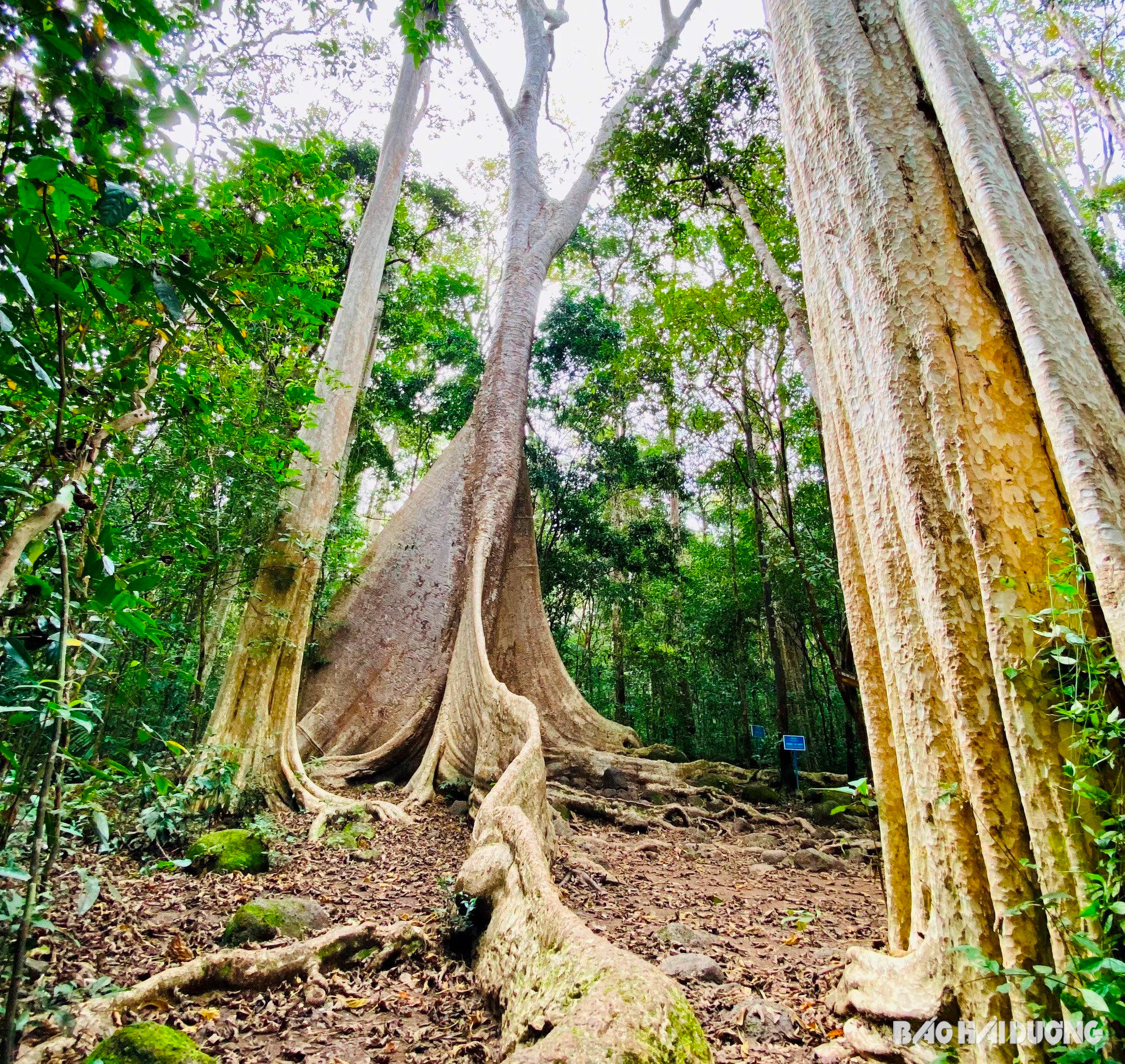
Living museums include many amazing trees
The museum of ancient trees in Cat Tien National Park can make anyone stunned. Here, the ancient pine trees are more than 400 years old, more than 40 meters high, and their trunks are so big that it takes 20 people to hug them. His roots spread out like prehistoric dinosaurs, crawling across several dozen meters of the jungle. On the other side, the ancient, precious and rare redwood tree has been determined by modern technology to be more than 700 years old, with a base diameter of up to 2.5 m. Since the late 1980s, comrade Pham Van Dong, then the Prime Minister of Vietnam, visited this "great wonder" red oak tree and gave valuable advice on forest protection work in the treasury. Precious nature of Cat Tien. Moved by this sentiment, officials and people here hung signs, opened directions and named the "heritage tree": "Uncle Dong's Knocking Tree".
We arrived at the Hundred-stem Sycamore Tree, through the enchanting forest paths, as if lost in a paradise of flowers and leaves. Many young people camp and hold parties on the banks of cool, clear streams. There, sycamore trees cover the stream, covering the banks, hundreds of meters long and wide. Not far away is a cycad tree that is several centuries old; The six-topped banyan tree, the elephant-shaped banyan tree, the "one in the world" banyan tree - all are majestic and have stood the test of time for the past 300 years, the Luc Giao banyan tree (in the sense of 6 ancient trees) The tree grows with its branches and leaves together) and has branches and branches interlocked with each other, forming a giant dome, making people think of the wonders and talented design ability of the Creator...
Dong Nai 4721 view
Update day : 14/02/2024
Suoi Lam Lake Tourist Area is one of the famous natural tourist destinations in Binh Phuoc next to Bu Gia Map National Park, Thac Mo Hydroelectric Lake, Ba Ra Mountain... With a romantic blue lake and forests. Rubber trees stretch to the horizon, the scenery here not only captures the hearts of the traveling community but also turns Suoi Lam Lake into the most popular weekend destination. It can be said that every season, this place captivates the footsteps of discoverers in a very unique way. If the period from December to January next year is memorable because of the cold weather and the radiant spring sunlight filtering through the leaves that are gradually changing color, then late February and early March will be the ideal time. Let you immerse yourself in the pure white color of the blooming coffee flower forest. Located in Dong Phu district, Binh Phuoc province, Ho Suoi Lam tourist area is very close to Ho Chi Minh City. With a distance of about 120km, it is extremely convenient for traveling, you can easily get here by many types of means of transport such as motorbikes, cars, and buses. A little more specifically about long-distance transportation, at Mien Dong Bus Station there are many bus routes departing from Saigon to Binh Phuoc. Depending on the bus company as well as the travel distance you choose, the expected ticket price will be around 65,000 VND to 100,000 VND/person. For backpackers who want to conquer Binh Phuoc in general and Ho Suoi Lam tourist area in particular by motorbike, below are the most popular routes from near and far: Starting from Saigon, you can go towards Binh Trieu Bridge to Highway 13 or Saigon Bridge to Hanoi Highway. No matter which route you choose, explorers will stop by Binh Duong - a place that welcomes you with a forest of rubber trees all along both sides of the road, as beautiful as a Korean movie, extremely suitable for check-in. virtual living". Possessing an area of up to 100 hectares, Suoi Lam Lake has a depth of about 4 meters. The lake surface here is calm all year round, making a special impression with its clear water reflecting the clouds. Surrounded by immense forests, the lake and stream are home to many species of freshwater fish such as silver carp and carp. carp, snakehead fish, carp... Not only does it impress with the pristine, peaceful and green natural scenery, coming here during the flower blooming season you also have the opportunity to enjoy the beautiful lake space like an earthly fairyland. The surface of the lake, which was originally like a shining mirror, is now covered with a layer of pure white flowers with extremely clear and pure beauty. Rowing a boat in the middle of the lake, you will soon let your soul drift along this beautiful forest of flowers and let them gently relieve all the pressure and fatigue that comes from a busy everyday life. Besides the captivating natural beauty, Suoi Lam Lake Tourist Area is also an ideal destination for relaxation, camping, fishing and picnics. Young people who come here after taking photos with the poetic lake and setting up tents to camp along the forest often participate in recreational activities such as bathing in streams, boating, water skiing... The tourist area also Providing large bamboo huts and cheap charcoal stove services to serve the picnic needs of families and groups of friends.
Dong Nai
November to April
5432 lượt xem
As one of the three highest mountains in the Southeast region, Ba Ra Thac Mo Mountain, Binh Phuoc, located at an altitude of 723m above sea level and with rugged terrain, was once a place marking many heroic, resilient and heroic achievements. There are so many anecdotes associated with important historical events of the nation. At Ba Ra Mountain Thac Mo Binh Phuoc also has Be River, Thac Me, Thac Mo hydroelectric power plant and forests with diverse and rich flora. Coming here, you will definitely admire the beautiful landscape painting that captivates people's hearts. From 1925 to 1941, the French colonialists built at the foot of Ba Ra mountain a large prison consisting of 3 military camps: Military camp A to imprison thieves and robbers; Military camp B held female prisoners, political criminals, and people suspected of being communists but not convicted; Military camp C to hold political prisoners. Currently, on the top of Ba Ra mountain there are still traces of the airport built by the American invaders. In addition, to commemorate the merits, a stele house and a memorial temple for soldiers, soldiers and people who sacrificed their lives in the resistance war in the Ba Ra area were built on Bang Lang hill in the Ba Ra mountain relic complex. Thac Mo Binh Phuoc. Another option for young people who like to explore and conquer spectacular challenges is trekking Ba Ra mountain. From the foot of the mountain, you can travel by motorbike or car along the paved road leading to Bang Lang hill. There is a memorial stele here to remember the merits of heroic martyrs. In addition, you can also try to experience the feeling of riding the cable car here. Ba Ra Temple is a project belonging to the Ba Ra historical relic complex and is also known as Linh Son Temple. The design here is inspired by the beliefs of the Southeast region, similar to famous architectural works in the Ba Den mountain complex (Tay Ninh) and Ba Chua Xu (An Giang). On the 1st, 2nd, 3rd, 4th days of the third lunar month every year, the Ba Ra Temple Festival is held, attracting many people to gather here to visit and express their gratitude and belief in their beliefs. folk. Binh Phuoc is not only famous for tourist destinations such as Bu Gia Map National Park or Quang Minh Pagoda. Ba Ra Mountain Thac Mo Binh Phuoc is also one of the tourist attractions that attracts many people from all provinces and cities to admire.
Dong Nai
From January to December
5443 lượt xem
If you are looking for a spacious and cool camping location near Saigon, please refer to Bu Lach Glade. Located in village 7, Dong Nai commune, Bu Dang district, Binh Phuoc, this is one of the most attractive camping locations for tourists. Surrounded by primeval forests and a large lake in the middle, Bu Lach has a strangely pristine and peaceful natural scenery. This place was originally a cluster of nearly 20 grasslands of different sizes with an area of up to 500 hectares. The reason for its name is due to a misreading of the local language of the M'Nong people. The village elders explained that here the word "lach" in the M'Nong language means "glad", in the glade there is a water tank so it is called Bau Lach, if read incorrectly it becomes Bu Lach. The road to Bu Lach Grassland is not too difficult. If you are from Saigon, you can buy bus tickets at Mien Dong bus station. Ticket prices are usually from 100k to 250k. If you want to explore nature and travel, you can travel by motorbike. There are two directions to get to Binh Phuoc. One is from Binh Trieu Bridge to follow Highway 133. The second direction is from Saigon Bridge to Hanoi Highway. Travel time is about 2 hours and 30 minutes to arrive. Check-in to the grassland, visitors will be amazed at what nature has bestowed upon them. These are vast green lawns surrounded by clear blue water, surrounded by primeval forests. Just like that, one glade follows another, endlessly green. The glades are usually about 5-10 hectares wide, but Big Glade is the most beautiful and widest, nearly 100 hectares. Another unique feature is that there is only one type of needle grass growing mixed with purple wildflowers, making the scene even more wild. Not only is the background beautiful for taking photos, you will also be impressed with the scenery here. Just standing there looking and breathing feels good. All the worries, fatigue, and dust have gone, leaving only the feeling of being surrounded by nature. Visitors here can also fish, walk sightseeing, boating, camping, play soccer on the grass, etc. Especially, in the dry season, the grass in the glade will turn bright yellow. You can bring tents to camp and hold BBQ parties. In addition to playing in the lake and grass fields, you can also go deep inside to see beautiful waterfalls. The grasslands and water basins are all protected forest areas and forbidden forests, so there are no residents living here. Around the grassland there are only villages of the S'tieng, M'Nong and Chau Ma ethnic groups. You can visit the communal houses to visit and learn about their culture. If you come in the third lunar month, you will be able to participate in their Dam Bau fish-catching festival.
Dong Nai
From January to December
5698 lượt xem
Known as one of the famous national parks in Vietnam thanks to its diverse natural ecosystem, flora and fauna that contribute to creating impressive scenery. Bu Gia Map National Park is currently a famous tourist attraction that many people choose to visit when coming to Bu Gia Map district, Binh Phuoc province. Although it has been established for many years, it was not until 2002 that this place was officially converted from a conservation area to a national park. With a total area of 25,601.18 hectares and divided into many conservation areas for many rare plants, directly affecting the genetic research process of many precious plant species. In particular, the forest coverage reaches 90%, creating a habitat for many types of animals. Not only does it play a conservation role, this is also a national park that greatly contributes to protecting and regulating water sources for hydroelectric and irrigation lakes. Visitors to Bu Gia Map National Park will be able to admire the close natural scenery, admire the green beauty, discover many precious flora and fauna species, and participate in interesting activities. Characterized by a sub-equatorial tropical monsoon climate, the national park has two distinct seasons: sunny and dry during the year. In particular, the average temperature will be about 25.8 - 26.2°C, which is quite favorable for visiting and exploring the national park landscape during the trip. Therefore, you can schedule a visit to the tourist area at any time of the year. However, to have a smooth visit and keep many memorable memories, you should choose to go during the dry season. Specifically, from November to early May of next year, you should avoid going to Bu Gia Map National Park during the rainy season because it will make it difficult to move and see the scenery. After arriving in Binh Phuoc province, to have a memorable and easier trip to Bu Gia Map National Park, many tourists are interested in choosing a quality place to stop. With the strong development of the tourism industry and the large number of tourists visiting every year, here you can find many hotels in Binh Phuoc. In particular, depending on the needs and desires of each person, they can choose a hotel with suitable quality for themselves. Therefore, you do not need to worry about where to stay on this tour. Besides, visitors can also refer to hotels in Binh Duong or City. Ho Chi Minh if you plan to visit during the day or camp on site. Trekking activities are indispensable when visiting natural tourist destinations such as national parks. During this process, you will experience many adventurous activities, immersing yourself in exciting space and scenery. At the same time, this is also an opportunity to explore many species of flora and fauna preserved in the national park. In addition, Da Voi Beach and Dak Mai Waterfall are an interesting attraction located in the national park area. Not only is it a large area, but this place also possesses many giant rocks in the middle of lush cashew gardens. and create the majestic Elephant Rock. Besides, Dak Mai waterfall flows from Dak Nong through Bu Gia Map national park combining changes in height to create an impressive and beautiful waterfall. One of the great experiences when coming to the famous tourist area in Binh Phuoc is to enjoy delicious dishes that are uniquely prepared and attractive. Some outstanding dishes that are highly appreciated by many tourists include: beef soup, bamboo-tube rice, wild boar meat, etc. All of them use available ingredients grown by local people. Through skillful processing, it creates unforgettable specialties from the first time you enjoy it.
Dong Nai
November to early May
5477 lượt xem
Suoi Giai Lake is a charming landscape located in Tan Lap commune, Dong Phu district. About 20 km from the center of Dong Xoai City, and about 80 km from the center of Ho Chi Minh City, Suoi Giai Lake is like a peaceful space nestled among the noise and dust of the city. The name Suoi Giai Lake comes from the connotation of Giai Nhan stream, which also means beautiful young woman. Therefore, the beautiful scenery here is often compared to a fairy descending to earth, gentle, gentle but no less flashy. Suoi Giai Lake is about 1.5 km wide, nestled between two hills, you can see the lake bed from above while driving. Review of Suoi Giai Lake shows that, in the past, Suoi Giai Lake was the upstream of a small stream. In 1978, after being approved by the Binh Phuoc provincial government, this place was converted into an irrigation dam with the task of storing and providing water for the use of the people here. Currently, this place is an interesting destination for the backpacking community, suitable for experiencing various types of activities such as camping, boating or fishing. Suoi Giai Lake is a large dam with a romantic and charming scene. At noon, the rays of sunlight shine down on the sparkling clear water, creating a very poetic and peaceful space. The most expensive scenery at Suoi Giai Lake must be at sunrise and sunset. When the sun appears and disappears, the scene seems to be dyed a brilliant orange-yellow color, lighting up the whole land and sky. On the lake bed, you can easily see the scene of a fisherman fishing and catching fish. It all took place under the sunset, painting a picture that couldn't have been more peaceful and romantic. Besides, when moving to Suoi Giai Lake, you will easily encounter wonderful and quite famous scenery. If you move from Binh Duong, you will pass by the Song Be Broken Bridge Relic, a famous place that appears quite a lot on the screen. In addition, when moving around the province, it will not be difficult for you to encounter Binh Phuoc rubber forests during the leaf-changing season. This is a place that many young people check in at the end of the year, when the forests are tall. The sun becomes bright yellow in a corner of Binh Phuoc sky.
Dong Nai
November to April
5392 lượt xem
Tan Hiep Prison, also known as "Tan Hiep Correctional Center", is located in Quarter 6, Tan Tien Ward, Bien Hoa City. Tan Hiep Prison Relic was ranked as a national relic by the Ministry of Culture and Sports on January 15, 1994. Tan Hiep Prison is one of the six largest prisons in South Vietnam and the largest prison in the Southeast region, built in an important military position, northeast of Bien Hoa town. Ahead is National Highway 1; Behind is the North - South railway line. This is an isolated location, convenient for transportation, easy for protecting, guarding, receiving prisoners from other places and transferring prisoners to Con Dao, Phu Quoc... Tan Hiep Prison has an area of 46,520 square meters with 8 prisons, including 5 prisons for communist prisoners and patriots. The prison is surrounded by 4 layers of barbed wire with 9 bunkers, 3 watchtowers with a team of guards and a modern alarm system. It's called "Correctional Center" but inside is actually a gun warehouse, an interrogation and torture room with the most modern tools. Each prison only has an area of nearly 200 square meters but holds 300-400 people, sometimes up to a thousand people. In particular, there are "repentance" rooms and "tiger cages" that are very small and narrow and living conditions are extremely harsh, prisoners live like in a crematorium. The diet was extremely unhygienic. The prison guards bought rotten rice and rotten fish to fertilize the fields, and fried them in oil to feed the prisoners, leading to many people being poisoned. With the determination to escape the imperial prison, return to the Party and the people to continue fighting and liberating the nation, on December 2, 1956, with the agreement of the Eastern Inter-Provincial Party Committee, the soldiers Communists were "detained" in Tan Hiep prison under the direct direction of comrade Nguyen Trong Tam (Bat Tam) - in charge of the prison Party Committee and a number of other comrades who suddenly broke the shackles. was able to free nearly 500 comrades and patriots. This event caused a stir in the Pentagon. America - Diem hastily mobilized both main forces and security forces, civil guards defending the three provinces of Bien Hoa, Ba Ria, Thu Dau Mot and two special forces to encircle and capture the prisoners, but all were defeated. failure. Our comrades and compatriots who escaped from Tan Hiep prison received help and protection from local facilities and returned safely to base. Among the escaped prisoners were comrades: Bay Tam, Hai Thong, Ly Van Sam... who became the core nucleus of the Dong Khoi movement later. In 2001, to partly recreate the crimes of the US - Diem against our comrades and compatriots imprisoned at Tan Hiep prison and describe the entire Tan Hiep uprising on December 2, 1956. , Dong Nai Museum has collected images, documents, and artifacts displayed at the relic and made a model to serve the research and sightseeing needs of all classes of people. Every day, the monument is open to visitors. Source: Dong Nai Electronic Newspaper
Dong Nai 12536 lượt xem
Nguyen Huu Canh temple, also known as Binh Kinh communal house, is located on the left bank of Dong Nai river, formerly belonging to Binh Kinh hamlet, Binh Hoanh village, Tran Bien canton, now Nhi Hoa hamlet, Hiep Hoa commune, Bien Hoa city. It was ranked as a national historical relic by the Ministry of Culture, Information, Sports and Tourism on March 25, 1991. Nguyen Huu Canh Temple was built around the end of the 18th century. Initially, the temple was small in scale, with walls made of boards and a yin-yang tile roof, about 400m south of the current temple. Documents say: the temple was first rebuilt in the fourth year of Tu Duc (1851); By 1923, the temple was rebuilt at its current location. Nguyen Huu Canh was born in 1650 in Gia Mieu, Tong Son district, Thanh Hoa province in a family with many famous generals in the dynasty. He was a man of both literature and martial arts, accomplished many great victories and was trusted, loved and respected by Lord Nguyen. In the spring of the year Mau Dan (1698), he obeyed Lord Nguyen's order to invade Dang Trong while it was still very desolate. Arriving in Dong Nai, he set up his headquarters at Cu Lao Pho (now Hiep Hoa commune); took Dong Nai land as Phuoc Long district, built Tran Bien palace, took Saigon land as Tan Binh district, built Phien Tran palace, the land expanded thousands of miles. He recruited immigrants to settle down, organized the administrative apparatus gradually and systematically, encouraged land reclamation, and promoted Cu Lao Pho to develop into one of the busiest and most dynamic port towns throughout the century. 18 and officially annexed the new land of the South into the Dai Viet map. After returning from the invasion of the South, the following year he again served Lord Nguyen Phuc Chu's command to lead an army to suppress King Chan Lap and maintain the southern border region. In April of the year Canh Thin (1700), after completing his mission, on the way back to Rach Gam (Tien Giang), he fell ill and passed away on the 16th day of the 5th lunar month, at the age of 51 years old. On the way to his hometown for burial, his coffin was stopped at the land where he once had his headquarters on Cu Lao Pho so that local people could have the opportunity to say goodbye to him one last time. At the mandarin's communal house, local people built a tomb to remember this event. When hearing the news of Nguyen Huu Canh's death, Lord Nguyen was extremely sorry and conferred on him the title of High-ranking official of the Town Chancellor with the title: Thanh Marquis Ceremony and had his tablet enshrined at the Thai temple. Source: Dong Nai Electronic Newspaper
Dong Nai 10388 lượt xem
La Nga Victory Relic (at km 104-112 on Highway 20 to Da Lat, in Phu Ngoc commune, Dinh Quan district) was ranked a national historical relic by the Ministry of Culture on December 12, 1986. To cheer for the Viet Bac victory in the fall-winter of 1947 and also to deal a fatal blow to the enemy, the command board of squad 10 decided to organize a big battle, to show the enemy that the Vietnamese people were , Vietnamese people do not easily submit to any enemy; With a spirit of courage and ingenuity after nearly half a year of preparation, studying the terrain, and choosing a location: at 15:12 on March 1, 1948, the La Nga ambush battle began and ended at 15:12 on March 1, 1948. 15:57 on the same day, in just 45 minutes. The victory of La Nga delighted the people of Dinh Quan in particular and the people of Dong Nai in general. This is a victory that demonstrates the cunning and courage of our army and people, causing the enemy to be stunned and defeated. From this victory, our force grew stronger and stronger, contributing to defeating the enemy's plan to attack quickly and win quickly, forcing them into a passive position. The scenic complex of Chong Rock, Mai Waterfall, La Nga River and La Nga Victory Monument is an interesting tourist complex of Dinh Quan. The amazing beauty of Hon Ba Chong, Da Voi Mountain, Hon Dia, along with the natural pagoda at the foot of the rocky mountain are typical clusters that create a harmonious beauty for the Da Chong scenic area. Dinh Quan Da Chong Complex is also a place that retains traces of prehistoric life. Here, under the stone roofs, along the streams and on the slopes along the valley, many production and daily life tools of the ancients made of stone, bronze and terracotta were discovered. During the 30-year resistance war. Dinh Quan is an important part of War Zone D. Da Chong witnessed the formation, development, stationing, and combat deployment of revolutionary forces. Today, a part of the land of Da Chong Dinh Quan scenic area has been used and built into the Dinh Quan District Cultural and Sports Center. In the near future, Da Chong Dinh Quan scenic area will be invested in and renovated, contributing to making the natural landscape more beautiful and becoming an attractive eco-tourism destination. Source: Dinh Quan District People's Committee
Dong Nai 10344 lượt xem
Trinh Hoai Duc Tomb is located in Quarter 3, Trung Dung Ward, Bien Hoa City, Dong Nai Province. Ranked as a national historical relic by the Ministry of Culture, Information, Sports and Tourism on December 27, 1990. Under the Nguyen Dynasty, Trinh Hoai Duc's tomb was located in Binh Truc village, Tran Bien palace. During the French colonial period, it was changed to Binh Truoc, in Chau Thanh district, Bien Hoa province. In 1938, Trinh Hoai Duc's mausoleum was classified as a relic by the Far East School. Local people often call it "Mr. Mausoleum" and there are many ancient tombs built of compound laterite. Many people believe that this was previously the tomb of the Trinh Hoai Duc family. The tombs are all built in the shape of an elephant, with a rectangular block plan; The stone steles engraved with Chinese characters face southwest, the walls are covered with green moss. In the entire Trinh family tomb area, Trinh Hoai Duc's tomb stands out because of its architectural scale, perhaps this was the intention of the tomb builders in accordance with the ancient principles of family lineage. Before 1975, every year during the Qingming Festival, Trinh Hoai Duc's descendants from other localities came to pay their respects with solemn ceremonies. Later, there was a ceremony because some descendants of the Trinh family had grown old or wandered, so the visiting ceremonies were no longer maintained as before. In 1998, on the occasion of the 300th anniversary of the formation and development of Bien Hoa - Dong Nai, Trinh Hoai Duc's tomb was restored and embellished. The original tomb architecture was preserved, surrounded by a solid citadel. Behind the tomb is a raised wall, forming a wavy oval shape. On the wall is an inscription in Chinese characters that resembles a poem praising Trinh Hoai Duc's virtue, but it has faded over time and is no longer readable. Both sides are decorated with two insulated dragon heads. Currently, this wall is decorated with a hidden dragon pattern. In front of the tomb entrance is a large screen, engraved with Trinh Hoai Duc's biography and career. On the square pillars connecting the walls of the citadel in front of the tomb, Chinese couplets are carved, the content is mainly about history and Trinh Hoai Duc's erudition in research. Inside the citadel is the main element of architecture, consisting of two parts: Graves: one of Trinh Hoai Duc and one of the main wife, surnamed Le. The structure of the tomb is the same, shaped like an elephant, surrounded by a horseshoe-shaped edge, in front of each grave is a stone stele, engraved with Chinese characters; The surrounding area is decorated with lines of text, yin and yang symbols, and the bottom is embossed in the form of a kneeling leg. The contents of the steles at Trinh Hoai Duc's two graves briefly state the titles, positions, ranks, and titles that Trinh Hoai Duc was bestowed with, along with his wife; Stele: also clearly states the time is November of the year At Dau, children Trinh Thien Le Nhien, Trinh Thien Nhien Bao, and Trinh Thien Bao jointly established the stele. Trinh Hoai Duc, a great talent, a great personality, has contributed to laying the foundation for a circle of pride in Dong Nai - Dong Nai Culture, which is the pride of Dong Nai people. Source: Dong Nai province electronic information portal
Dong Nai 7446 lượt xem
The Long Khanh Provincial Administrative Building relic located on Cach Mang Thang Tam street, Xuan An ward, Long Khanh town, was ranked a national historical relic by the Ministry of Culture on November 16, 1988. Long Khanh Administration Building has a total area of 9,000 square meters, built in 1965 in French-style architecture, including a ground floor and an upper floor. This was the highest working headquarters of the American puppet in Long Khanh province at that time. In March 1975, the US - puppet government built the strategic defense line of Phan Rang - Xuan Loc - Tay Ninh to prevent the advance of our troops along the North-East gateway to Saigon. Long Khanh Administrative Building was chosen as the control center for all military activities of this defense line. Thoroughly grasping the ideology of the Party Central Politburo, the Regional Command decided to launch the Xuan Loc campaign to liberate Long Khanh town, destroy the enemy's strategic defense line, and advance to liberate Saigon. On April 9, 1975, 5 hours after the campaign started, a major battle took place at the Long Khanh Administrative Building. Comrades Pham Le Canh, Nguyen Van Trong, battalion 5; Nguyen Thanh Son, Nguyen Minh Duc, the 7th battalion of Regiment 266 of the 341st Division's assault spearhead led by comrade Tran Van Tran, attacking from the north of the town, planted the flag "Determined to win, determined to win" on the top of the flagpole. on the 1st floor of the Administration Building. This is a historic turning point victory for the Vietnamese revolution and the pride of the people of Long Khanh in the resistance war against America to save the country. After the liberation of the South on April 30, 1975, Long Khanh province was reorganized into Xuan Loc district. The Administration Building was repaired and became the headquarters of the People's Committee of Xuan Loc district. In 1991, Long Khanh district was separated from Xuan Loc district, the Administrative Building became the headquarters of the People's Committee of Long Khanh district. In 2004, the Administration Building was assigned to the Department of Culture, Sports and Information of Long Khanh town to manage and use: The ground floor is a library to store documents to serve readers, the upper floor is a traditional gallery with 176 documents and artifacts. Every year it attracts about 500 visitors, researchers and students. Source: Dong Nai Electronic Newspaper
Dong Nai 7291 lượt xem


Download the Travelviet app to receive notifications about the latest travel news
